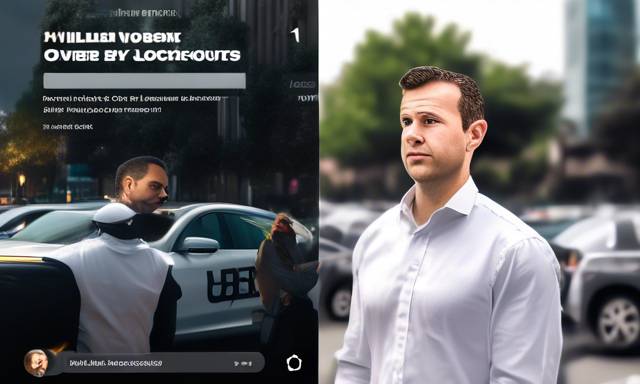How Uber and Lyft Lockouts Cost Drivers Millions 💰
The ongoing lockouts by Uber and Lyft are resulting in significant financial losses for drivers in New York City. This year, an increasing number of drivers are facing arbitrary restrictions that prevent them from logging into the app. These incidents are creating a dire environment for those who rely on ridesharing as their main source of income.
Understanding Lockouts: A Driver’s Dilemma 🤔
Lockouts occur when drivers cannot access the app to accept rides. Many drivers describe their frustrations stemming from experiences where they find themselves unable to work for extended hours, from mere minutes to as long as eight hours. These lockouts often happen without warning, leaving drivers in a lurch and questioning the supposed flexibility of their role.
The situation has deteriorated to the point where drivers have begun participating in protests to voice their concerns regarding these practices. With companies tightening controls on access, drivers are feeling marginalized and powerless. Many drivers, like one individual who detailed their experience, feel dehumanized by the system, comparing their situation to that of being a robot. For individuals with families to feed and responsibilities to uphold, these lockouts have far-reaching consequences.
The Origin of Lockouts: Pay Structures and Incentives 💼
These lockouts can be traced back to a pay structure established six years ago. The calculations set forth by New York City’s regulations mandate a minimum wage for drivers, but the mechanisms in place allow companies to evade their obligations. In the quest to comprehend the rationale behind these lockouts, a group of drivers initiated a project utilizing a WhatsApp bot, leading to the collection of over 7,300 screenshots and interviews from hundreds of drivers. Their research pointed to a pattern of lockouts that occur frequently throughout the day and in unpredictable situations.
- Key Findings:
- Lockouts are prevalent, occurring at any hour.
- More than 400 instances of lockouts were noted in surge pricing zones, impacting overall driver earnings.
- Drivers reportedly altered their working hours extensively to compensate for lost income.
Analyzing the Impact of Lockouts on Wages 💵
The New York Taxi Workers Alliance views the ongoing lockouts as a manipulation tactic affecting how drivers meet the minimum wage requirement. This practice of restricting access leads to inefficiencies and discourages profitability for drivers working under these conditions. As Uber and Lyft thrive on a business model that floods the area with drivers, many find themselves idly waiting for potential passengers.
In 2017, significant insights emerged from studies conducted by the Taxi and Limousine Commission regarding fair pay for rideshare drivers. Results revealed that a staggering 75% of trips compensated drivers below the living wage when factoring in expenses, indicating a considerable need for stricter regulations.
Utilization Rates: A Critical Metric ⚖️
The calculation of driver pay involves a unique metric known as the utilization rate, which measures the percentage of time drivers spend with passengers. A higher utilization rate correlates with higher earnings for drivers, while increased downtime necessitates that companies compensate the drivers. Originally, these rates were intended to be reset bi-annually, but disruptions caused by COVID-19 delayed this process.
As of now, the utilization rate sits at 58%, meaning that drivers spend about 58 minutes out of every 100 actively working with passengers. With the rideshare industry recovering from pandemic-related downturns, regulators are reevaluating how these rates influence driver compensation.
Future of Rideshare Drivers: What Lies Ahead? 📈
With data from this year revealing substantial potential losses for drivers, it was reported that Lyft could owe approximately $53 million more in minimum payments, while Uber could face a $154 million deficit due to these lockouts. Following two months of widespread protests and driver dissatisfaction, the city and the rideshare companies reached an agreement in late July to reduce instances of lockout. Uber announced a cessation of lockouts starting in September, but Lyft continues to apply these restrictions.
The fight against lockouts reflects the larger struggles drivers face in the gig economy, raising questions about the essential regulations needed to guarantee fair wages and conditions. As society navigates these complex challenges, government intervention may be necessary to ensure that workers receive equitable compensation.
Hot Take: The Need for Change in the Gig Economy 🔥
Rideshare services like Uber have provided significant opportunities and flexibility for many individuals. However, the lockout situation jeopardizes the livelihoods of thousands. The evolving conditions in New York City highlight a critical need for robust regulations that protect drivers and ensure they can earn a fair income. The ongoing debate emphasizes the importance of establishing a sustainable space in the gig economy where drivers’ rights are honored and upheld.





 By
By

 By
By


 By
By